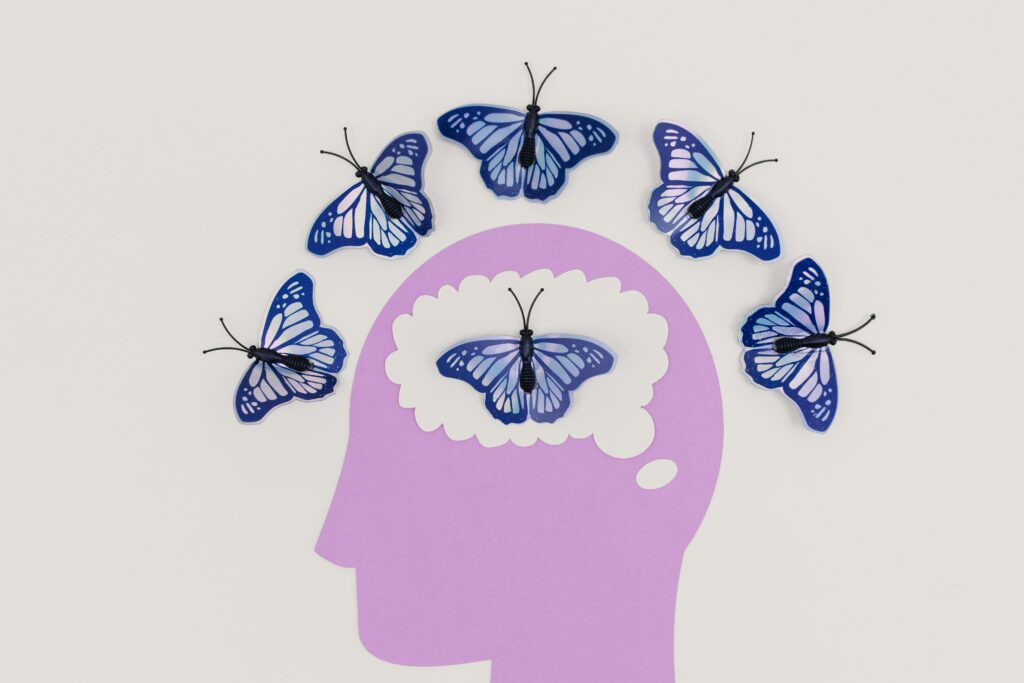Introduction: The Power of CBT in Rewiring Your Brain
In a world filled with constant stress and mental clutter, learning how to rewire your brain using CBT (Cognitive Behavioral Therapy) techniques can be a life-changing breakthrough. Instead of being stuck in loops of negative thinking, CBT empowers you to break free from those mental patterns and build a healthier, more optimistic mindset. It’s not magic—it’s neuroscience, and with the right strategies, you can literally reshape how you think, feel, and respond to everyday challenges.
CBT is more than just a mental health buzzword—it’s a scientifically-backed method for shifting your mindset. If you’ve ever caught yourself stuck in a loop of self-doubt, fear, or pessimism, you’re not alone. But with the right tools, you can break the cycle and start thinking in a way that supports your success, happiness, and peace of mind.
In this article, we’ll break down:
- What negative thinking really is
- How CBT can help
- 15 actionable CBT techniques
- Real-life applications
- FAQs and expert guidance
Ready to flip the switch in your mind? Let’s dive in.
What Is Negative Thinking?
Negative thinking is a habitual pattern of interpreting experiences in a pessimistic, self-defeating way. It doesn’t just affect your mood—it influences your decisions, relationships, and even your physical health.
Common Patterns of Negative Thoughts
- All-or-Nothing Thinking: “If I’m not perfect, I’m a total failure.”
- Catastrophizing: “If I mess this up, everything will fall apart.”
- Overgeneralization: “I failed once, so I’ll fail every time.”
- Mind Reading: “They probably think I’m stupid.”
- Fortune Telling: “I know I’ll mess this up.”
These distorted thoughts become mental habits. They feel automatic. But they can be unlearned.
The Impact of Persistent Negativity
Prolonged negative thinking can lead to:
- Anxiety disorders
- Depression
- Low self-esteem
- Chronic stress
- Social withdrawal
Thankfully, CBT offers a clear path out.

Understanding CBT (Cognitive Behavioral Therapy)
CBT is a therapeutic approach that helps people recognize and change negative thought patterns and maladaptive behaviors. It operates on the idea that our thoughts, feelings, and behaviors are interconnected.
How CBT Works to Change Thought Patterns
CBT helps you:
- Identify negative thoughts
- Challenge irrational beliefs
- Replace them with healthier ones
- Reinforce positive behavior patterns
Why CBT Is Effective for Rewiring the Brain
CBT isn’t just about “thinking happy thoughts.” It’s about building new neural pathways that encourage optimism, clarity, and resilience.
Neuroscience shows that with consistent CBT practice:
- New brain connections form
- The amygdala (fear center) becomes less reactive
- The prefrontal cortex (logic center) strengthens
In short: You become less reactive and more rational.
Top 15 CBT Techniques to Rewire Your Brain
1. Cognitive Restructuring
Identify negative thoughts and replace them with rational alternatives.
Example: Change “I’ll never succeed” to “I’ve faced challenges before and overcame them.”
2. Thought Records
Write down:
- The negative thought
- The situation
- Evidence for and against it
- A more balanced perspective
3. Behavioral Experiments
Test your assumptions by trying something new and seeing what happens—don’t just assume the worst.
4. Identifying Cognitive Distortions
Name the distortion (like mind reading or catastrophizing) and challenge it with facts.
5. Socratic Questioning
Ask yourself:
- “Is this thought 100% true?”
- “What evidence do I have?”
- “What would I say to a friend thinking this?”
6. Graded Exposure
Face your fears in small, manageable steps. It desensitizes the brain to anxiety triggers.
7. Activity Scheduling
Plan enjoyable or productive tasks in your day to fight avoidance and depression.
8. Mindfulness-Based CBT
Combine CBT with present-moment awareness to reduce stress and emotional reactivity.
9. Problem-Solving Techniques
Use structured steps to work through challenges logically rather than emotionally.
10. Positive Data Logs
Track positive feedback and moments of success daily to shift focus from failures.
11. Imagery Rescripting
Mentally reimagine past traumas or failures with empowering endings.
12. Assertiveness Training
Learn to communicate needs clearly without guilt or aggression.
13. Journaling for Self-Awareness
Write daily reflections to catch thought patterns early and stay grounded.
14. Relaxation Techniques
Incorporate deep breathing, progressive muscle relaxation, or guided imagery.
15. Building a CBT Toolkit
Create a go-to list of strategies you’ve learned and review it when you’re overwhelmed.

✅ Daily Habits That Support a CBT Mindset
Morning Mental Health Check-ins
- Journal one positive thought
- Set a realistic goal
- Rate your mood (1–10)
Creating a Positive Evening Routine
- Reflect on wins (big or small)
- Practice gratitude
- Meditate for 5 minutes
These habits help CBT stick and reinforce positive neural connections.
❓ FAQs :
1. Can CBT really change your brain?
Yes, absolutely. Neuroscience confirms that CBT can change how your brain functions by forming new neural pathways. This process, called neuroplasticity, helps you shift from automatic negative thoughts to more balanced, realistic thinking.
2. How long does it take to see results with CBT?
It depends on the person and how consistently they practice the techniques. Most people see noticeable improvements within 4–6 weeks of regular CBT use. However, lasting change typically requires 3–6 months of continuous practice.
3. Is CBT only useful for people with mental health disorders?
Not at all. While CBT is widely used to treat anxiety and depression, it’s also extremely effective for personal growth, stress management, and building emotional resilience—even for those without a diagnosed condition.
4. Do I need a therapist to practice CBT?
A trained CBT therapist can help you get the most out of the process, especially at the start. However, there are plenty of CBT workbooks and online tools that make it accessible for self-practice. Many people benefit from a hybrid of both.
Here’s a great resource to start with: NHS Self-Help CBT Resources
5. What is the best time of day to practice CBT techniques?
It’s best to integrate CBT into your daily routine—morning reflections, mid-day journaling, and evening thought records work well. What matters most is consistency, not the exact time of day.
6. What if CBT doesn’t work for me?
CBT isn’t a one-size-fits-all solution, but it can be adapted. If traditional CBT techniques feel ineffective, you might benefit from Mindfulness-Based CBT, Acceptance and Commitment Therapy (ACT), or Dialectical Behavior Therapy (DBT). Consulting a professional can help tailor the approach to your needs.
🕰️ How Long Does It Take to Rewire Your Brain?
Studies suggest that it takes about 21 to 66 days to form a new habit—and rewiring thought patterns is no different. With daily practice, you’ll start to feel lighter, clearer, and more confident within a few weeks. But deep, lasting change often builds over several months.
Here’s a simple timeline:
| Timeframe | Changes You May Notice |
|---|---|
| Week 1–2 | Increased awareness of negative thoughts |
| Week 3–4 | Improved emotional regulation |
| Month 2 | Noticeable shifts in automatic thinking |
| Month 3+ | Stronger habits, greater resilience, consistent positivity |
Patience and practice are key.

🌟 Real-Life Examples of CBT Success
Case Study 1: Sarah, 29, Anxiety & Overthinking
Sarah constantly feared the worst—social interactions, job interviews, even texting friends. With CBT tools like cognitive restructuring and thought records, she challenged her catastrophizing. Within two months, she felt more confident and less reactive.
Case Study 2: Mike, 41, Chronic Negativity
Mike used to say, “Nothing ever works out for me.” Through positive data logs and mindfulness, he learned to spot when his mind spiraled. Today, he leads a small business and even trains others on emotional intelligence.
🧑⚕️ When to Seek Professional Help
If negative thinking affects your ability to function, ruins your sleep, or damages relationships, it’s wise to consult a therapist. A trained CBT practitioner can:
- Provide personalized tools
- Guide you through difficult patterns
- Monitor your progress
There’s no shame in asking for help. In fact, it’s a power move toward personal growth.
✅ Conclusion: Empower Your Mind, Change Your Life
Negative thinking isn’t your destiny. It’s just a habit—a loop your brain has gotten comfortable playing. But with CBT, you have the power to break that loop, build new beliefs, and live life on your terms.
Here’s your next step:
- Pick 2–3 CBT techniques from this article
- Practice them daily for at least 21 days
- Track your progress in a journal or app
Your brain is capable of amazing transformation. You just need the right tools—and now, you have them.
So… are you ready to rewire your brain?
Explore More Articles to Empower Your Life
If you found value in learning how to Rewire Your Brain, you’ll love these related articles designed to help you grow and take control of your life:
- How to Silence Your Inner Critic and Build Real Self-Confidence
- The Importance of Hydration for Overall Well-being
- What to Eat Before and After Exercise
Check them out to continue your journey toward personal growth and empowerment!

